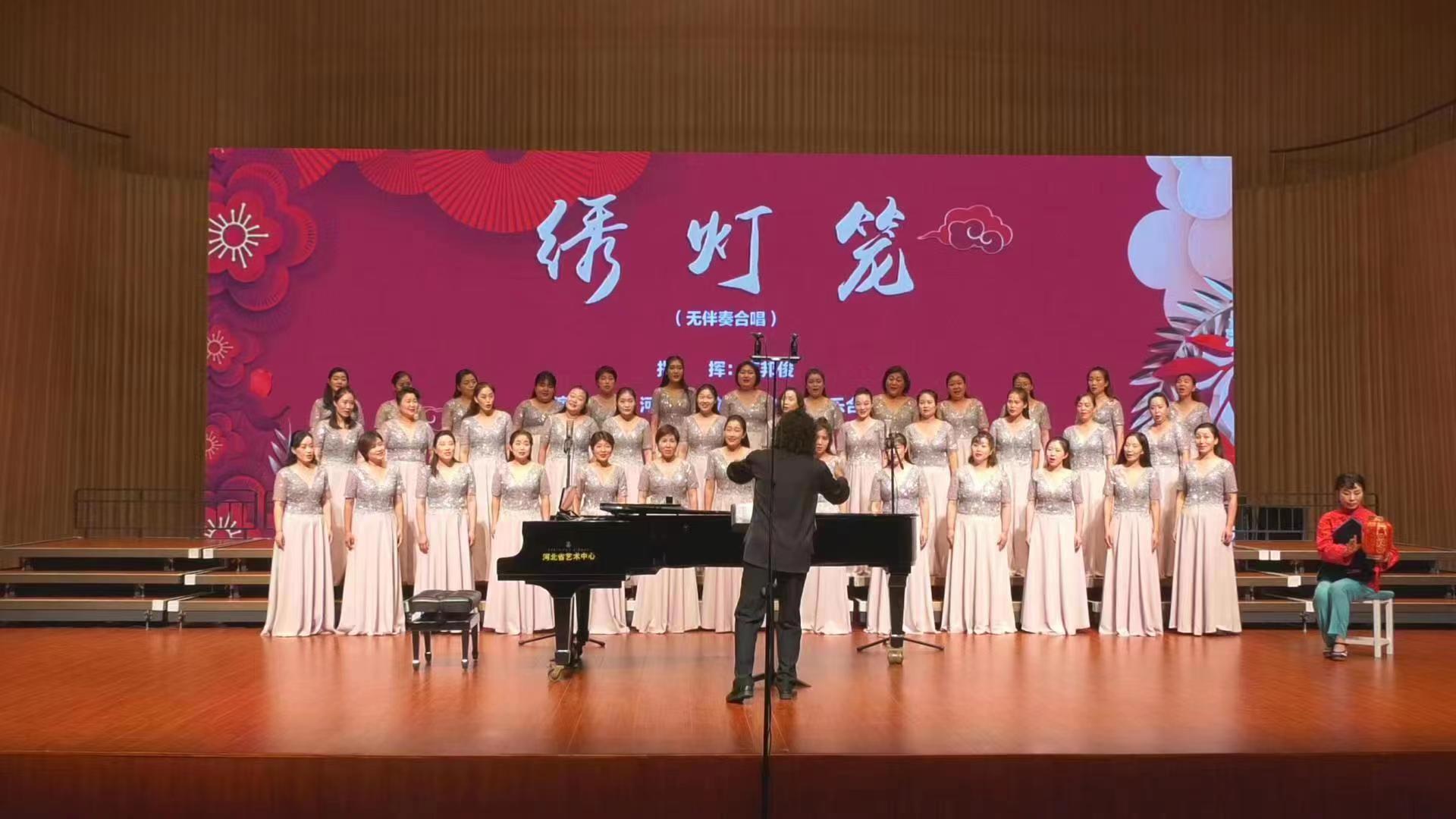Micro -reviewing Thirteen Arts | No accompaniment chorus "Embroidery Lantern" -The new attempt adapted from Hebei folk song
Author:Cultural Tourism China Time:2022.09.14
This year, the 19th Star Awards, the star chorus "Embroidery Lantern" reported by the Hebei Group Art Museum, was adapted from Hebei Jidong Min Song "Embroidery Lantern" and was sung by Hebei Aisle Women's Choir. The work is based on the form of a national singing method to sing the chorus of the Gome, and it is accompanied by an unaccompanied music expression to present the overall artistic effect.

Photo Conferry, Hebei Provincial Museum of Mass Art Museum, Hebei Provincial Intangible Cultural Heritage Protection Center
"Embroidery Lantern" is a song in Hebei Jidong Min Song. The content is combined with five more forms in the form of five stages, involving five historical and legendary love stories. A major feature of the melody of Jidong folk songs is that the high throw is low. From the beginning, that is, starting from the middle of the sound zone, the sound zone is similar to the speech, and the mouth is loud; the high throw is gradually moving towards the treble; Essence The chorus "Embroidery Lantern" is a three -stage type, which takes the title of "one more", "three more" and "five more". The first paragraph is lyrical, which is adapted from the three patches of the original folk song to four two shots, which is gentle and melodious; the second form becomes a lively three -beat, the comparison of music and weakness is more comparison, the sound and strength of the sound and strength The performance is richer; the third paragraph has changed back to the first paragraph, but the melody increases the tone of the overall treble, making the entire chorus more tension.
The form of "non -accompaniment chorus" adopted by this work, which is now familiar to "Akabella", refers to a multi -sound music performance method that sings only with vocal singing without using musical instruments. This method of performance originated in the singing class of the Catholic Church in Europe. Since the end of the Renaissance, it has gradually become a form of secular music singing. The accompaniment chorus has an important place in the history of modern music in my country. Because it has no instrumental guidance and relying on human voices, it has high requirements for the sound standards of each voice of the choir. In this chorus, the overall singing of the choir is more accurate in the first two paragraphs, which is due to the daily solid vocal basic training of the choir. There is a little regret. The flaws are not concealed, and the whole accompaniment chorus is highly completed, and the choir members cooperate with each other, and the singing is full of emotions. The combination of music treatment is sometimes affectionate, sometimes lively and lively, turning to melodious, making people intoxicated.
In the chorus, the performance of the lead singer has been widely used. The beginning of the work opened by the four -sound Hero humming, introducing the admirer into it. During the singing process, the entire work interspersed a solo actor in folk songs in the local specialties of Hebei, so that the audience was more intuitive visually Feeling. However, the solo part of the folk song is disconnected from the overall emotional atmosphere of the chorus. "Embroidery Lantern" is a folk song that praises love. The choir is also lyrical and beautiful in interpretation of emotional processing, but the singing part of the solo part has a "sadness" in both singing and emotional expressions. The whole track style is contradictory.
With the vigorous development of Chinese chorus arts in recent years, the masses' chorus has also carried out innovation and exploration throughout the country. Many creators and conductors are also exploring a more novel form of stage expression. All forms of innovation are to better present chorus works. How to make the form of performance better combined with the chorus, how to make the two more harmonious and unified, it is worth thinking about.
The workless chorus "Embroidery Lantern" is a new attempt adapted from Hebei folk songs as an unaccompanied chorus. The more mature chorus of the Elelasses Women's Choir, which makes the whole work more agile. It is believed that it will be more high -quality and more exciting.
(Special author: Jin Yawei, the Institute of Culture and Tourism, Hebei Province)
Responsible editor: Hao Gongzi
- END -
Director Chen Jianying: "Xueba" filming a movie, "Go to shoot" is very important

[Global Times reporter Zhang Zhenji Yuyu] The 27 -year -old young director Chen Ji...